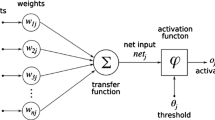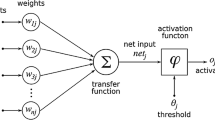Abstract
Bridges are playing a major role in the socioeconomic development of any country over the world. Suspension bridges are one of the most sensitive structures to various external influences and loads. Therefore, the need for structural monitoring system, maintenance, and deformation prediction for these types of structures is important and vital. Time of observations for the purpose of structural deformation can vary from a few hours, days to several months, or even years. This paper investigates an integrated monitoring system using GNSS observations for studying the deformation behavior and points displacements prediction for suspension highway bridge, taking into consideration the effect of wind, temperature, humidity, and traffic loads during the operational and short-term measurements. Due to the complexity of the mathematical processing of large GNSS monitoring data for obtaining reliable results, adequate model of several alternatives should be chosen. One of the main objectives of this paper is to investigate the optimum predictive soft computing model for processing GNSS observations and points displacement prediction. Several mathematical models and two cases of data amount (66.67% and 50% of all available data) for dynamic and kinematic state are applied and compared for prediction of suspension bridge displacement with confidence interval with a probability ρ = 0.95, Δ = ±2σ. The resulting point displacement values by applying ANNs and ANFIS, which used a confidence interval with a probability of ρ = 0.95, Δ = ± 2σ when using 66.67% of all data, are more accurate and reliable than any other applied methods; therefore, ANNs and ANFIS can provide a significant improvement of understanding and predicting the structure deformation values where conventional mathematical modeling techniques were not as accurate or capable especially in dynamic prediction of displacements.
















Similar content being viewed by others
References
Akhnoukh AK (2020) Application of large prestress strands in precast/prestressed concrete bridges. Civil Engineering Journal 6(1). https://doi.org/10.28991/cej-2020-03091458
Akyilmaz O, Celik RN, Apaydin N, Ayan T (2004) “ GPS monitoring of the Fatih Sultan Mehmet suspension bridge by using assessment methods of neural networks” The International Archives of the Photogrammetry, Remote Sensing, Spatial Inf. Sci. 34:702–707
Azar RS, Shafri HZ (2009) Mass structure deformation monitoring using low cost differential global positioning system device. J Applied Sciences, ASCE 6(1):152–156. https://doi.org/10.3844/ajas.2009.152.156
Ashraf AA Beshr (2010) “Development and innovation of technologies for deformation monitoring of engineering structures using highly accurate modern surveying techniques and instruments”, Ph.D. thesis, Siberian State Academy of geodesy SSGA, Novosibirsk, Russia, 205 p
Ashraf A. A. Beshr (2012) “Monitoring the structural deformation of tanks”. ISBN: 978-3-659-29943-8. LAP LAMBERT Academic publishing, Germany. 284 p.
Cankut DI, Muhammed S (2000) Real-time deformation monitoring with GPS and Kalman Filter. Earth Planets Space 52(10):837–840. https://doi.org/10.1186/BF03352291
Chen Q, Jiang W, Meng X, Jiang P, Wang K, Xie Y, Ye J (2018) Vertical deformation monitoring of the suspension bridge tower using GNSS: a case study of the Forth Road Bridge in the UK. Remote Sens 2018(10):364. https://doi.org/10.3390/rs10030364
Haykin S (2001) Kalman filtering and neural networks. Communication Research Laboratory, McMaster University, Hamilton, Ontario, Canada. https://doi.org/10.1002/0471221546
Kaloop MR, Li H (2009) Monitoring of bridges deformation using GPS technique. KSCE J Civil Eng (KSCE):423–431. https://doi.org/10.1007/s12205-009-0423-y
Kaloop MR, Hu JW, Sayed MA (2015) Bridge performance assessment based on an adaptive neuro-fuzzy inference system with wavelet filter for the GPS measurements. ISPRS Int J Geo-Inf 2015(4):2339–2361. https://doi.org/10.3390/ijgi4042339
Kaloop, M. R., Mosaruf Hussana and Dookie Kima (2019) “Time-series analysis of GPS measurements for long-span bridge movements using wavelet and model prediction techniques” Journal “Advances in Space Research” Volume 63, Issue 11, P. 3505-3521. DOI: https://doi.org/10.1016/j.asr.2019.02.027
Kaplan D, Hegarty J (2006) Understanding GPS principles and applications, 2nd edn. Artech House, Inc., UK
Keshavarz Z (2018) Application of ANN and ANFIS models in determining compressive strength of concrete. Journal of Soft Computing in Civil Engineering 2-1(2018):62–70. https://doi.org/10.22115/SCCE.2018.51114
Khademi F, Akbari M, Nikoo M (2017) Displacement determination of concrete reinforcement building using data-driven models. Int J Sustain Built Environ 6:400–411. https://doi.org/10.1016/j.ijsbe.2017.07.002
Krishna MSV, Begum KMS, Anantharaman N (2017) Hydrodynamic studies in fluidized bed with internals and modeling using ANN and ANFIS. Powder Technol 307:37–45. https://doi.org/10.1016/j.powtec.2016.11.012
Mellit A, Saglam S, Kalogirou SA (2013) Artificial neural network based model for estimating the produced power of a photovoltaic module. Renewable Energy 60:71–78. https://doi.org/10.1016/j.renene.2013.04.011
Meng X, Nguyen DT, Xie Y, Owen JS, Psimoulis P, Ince S, Chen Q, Ye J, Bhatia P (2018) Design and implementation of a new system for large bridge monitoring—GeoSHM. Sensors (Basel) 18(3):775. https://doi.org/10.3390/s18030775
Myint MO, Kyi CCT, Zin WW (2019) Historical morphodynamics assessment in bridge areas using remote sensing and GIS techniques. Civil Engineering Journal 5(11):2515–2524. https://doi.org/10.28991/cej-2019-03091429
Roger Jang JS (1993) ANFIS - Adaptive-network-based fuzzy inference system. IEEE Transactions on Systems Man and Cybernetics 23. https://doi.org/10.1109/21.256541
USACE (2002) “Structural Deformation Surveying” (EM 1110-2-1009). US Army Corps of Engineers, Washington, DC
Vanatwerp RL (1994) “Engineering and design: deformation monitoring and control surveying” Engineer manual. – U.S Army corps of engineering. EM 1110-1-1004. – Washington. – U.S, –141 p
Wieland D, Wotawa F, Wotawa G (2002) From neural networks to qualitative models in environmental engineering. Computer-Aided Civil and Infrastructure Engineering 17:104–118. https://doi.org/10.1016/j.asr.2019.02.027
Yu J, Yan B, Meng X, Shao X, Ye H (2016) Measurement of bridge dynamic responses using network-based real-time kinematic GNSS technique. J Surv Eng 2016:142(3). https://doi.org/10.1061/(ASCE)SU.1943-5428.0000167
Zarzoura F, Mazurov B, Ahmed C. (2015) “Geodetic monitoring cable-stayed bridges using GNSS” FIG Working Week 2015, From the Wisdom of the Ages to the Challenges of the Modern World, Sofia, Bulgaria, 17–21 May 2015, ID No 7717, 10 p
Acknowledgements
The authors want to thank Dr. Mosbeh Rashed Mosbeh, Public Works Engineering Department, Faculty of Engineering, Mansoura University for providing the data (observations) of the studied suspension bridge.
Author information
Authors and Affiliations
Corresponding author
Ethics declarations
Conflict of interest
The authors declare that they have no competing interests.
Additional information
Responsible Editor: Abdullah M. Al-Amri
Rights and permissions
About this article
Cite this article
Beshr, A.A.A., Zarzoura, F.H. & Mazurov, B.T. Performance of soft computing techniques for GNSS data processing and point displacement modeling for suspension bridge. Arab J Geosci 14, 1057 (2021). https://doi.org/10.1007/s12517-021-07037-y
Received:
Accepted:
Published:
DOI: https://doi.org/10.1007/s12517-021-07037-y




